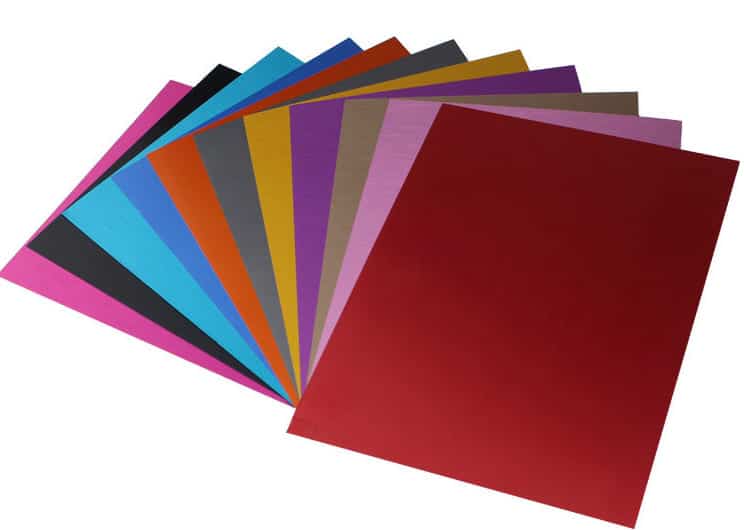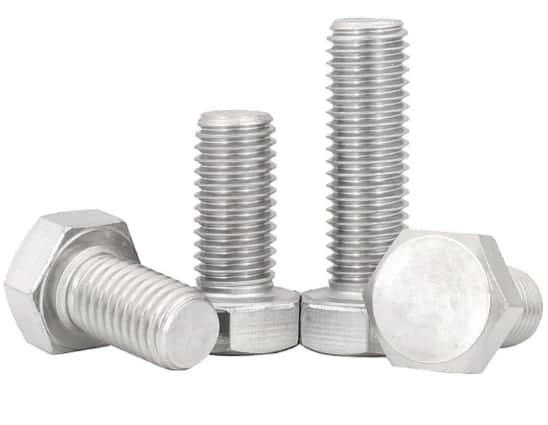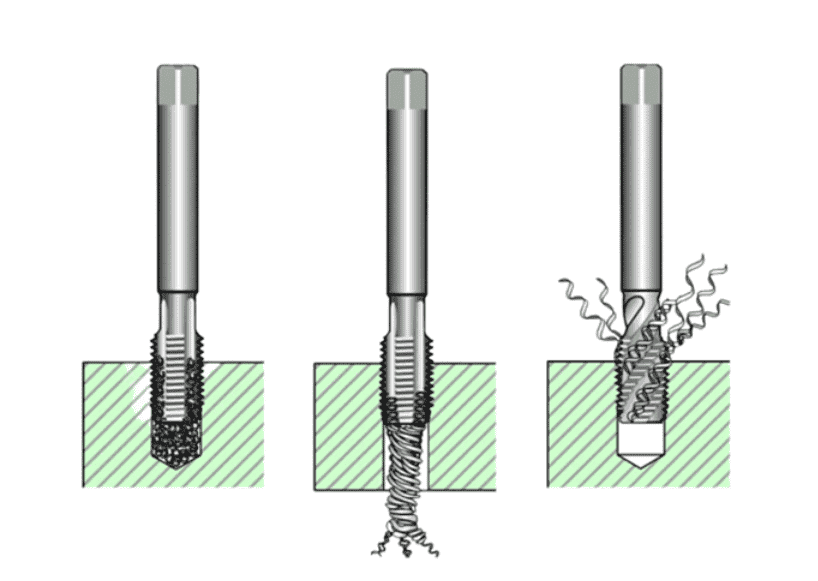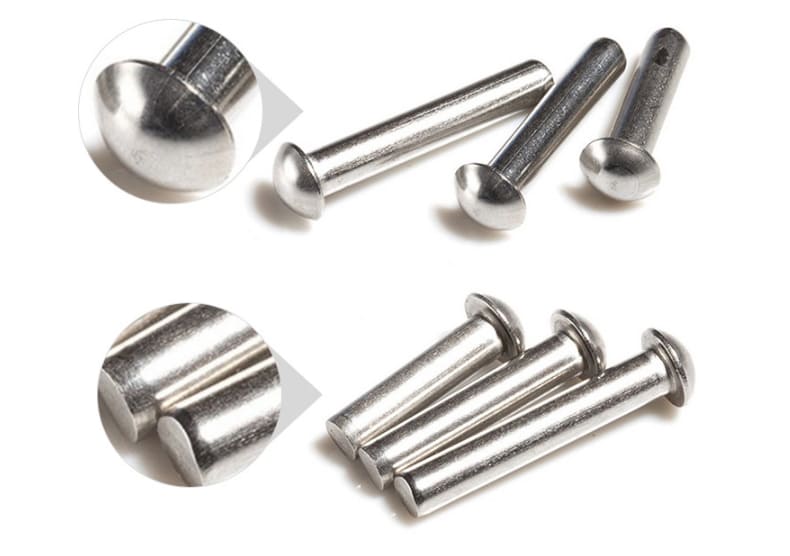Introduction
Surfaces of aluminum-based alloys and other non-ferrous metals can be coated with a thick oxide layer via hard coat anodizing. Aluminum anodizing with a hard coat is often called Type III anodizing.
This type of anodizing increases the resistance of the base metal to abrasion and corrosion, decreases surface conductivity, and increases surface hardness. Frequently, anodized aluminum extrusions are hard-coated.
Process of Hard Anodizing Aluminum
Anodizing is an electrochemical process used to convert aluminum, which is then applied to aluminum extrusions to prevent corrosion, enhance lubricity, and enable the dying of various colors.
“The anodic structure originates from the aluminum substrate and is composed entirely of aluminum oxide,” states the Aluminum Anodizers Council (AAC).
This aluminum oxide is not applied topically like paint or plating but is chemically bonded to the metal substrate, making it impervious to flaking or peeling. Anodizing is a multi-step technique that can achieve a wide variety of finishes.

Step 1: Pre-Treatment of the First Stage
The first steps in the anodizing process are to grade the aluminum and apply a finish. The desired look can achieve using a glossy or matte finish.
When metal is given a satin finish, the surface is lightly etched to provide a uniform matte texture.
Aluminum that has not been pre-treated must undergo a process called “bright finishing,” which entails removing any remaining heavy metals.
Aluminum extrusions with a bright or satin finish are ideal for anodizing because they have smooth, unblemished surfaces.
Step 2: Anodic Oxide
As part of the anodizing procedure, the material is immersed in an acid electrolyte bath while an electric current flows through it.
According to the AAC, “aluminum acts as an anode, releasing oxygen ions that combine with the surface aluminum atoms.
“This metal chemical shift is achieved by controlled oxidation. Many methods can color anodized aluminum.
Step 3: Colour Anodizing
Aluminum can be colored using several different anodizing processes. Electrolytic coloring entails submerging the anodized aluminum in a salt solution made of inorganic metals.
An electric current is added to the bath to accelerate the oxidation of the metal salts in the aluminum pores.
The color of the metal will vary based on the chemical composition of the bath and the amount of time it is submerged.
Gold, black, stainless, transparent, brown, bronze, and nickel colors are typical for anodized finishes.
Advanced technology has allowed some businesses to offer additional services like color matching and custom color anodizing.
Step 4: Sealing
The final step in the anodizing process is sealing the metal to prevent corrosion and water leakage.
Three possible approaches to sealing the anodized aluminum extrusions are cold, hot, and hybrid. That safeguards the surface from being scratched or stained in any way.

Characteristics and Features of Hardcoat Anodize
- Superior protection against rust
- Non-conductive
- Superior wear resistance
- The ability to take a black dye
- To reduce wear and tear
Some other properties of hard coat anodizing aluminum are
Enhanced Visual Appeal
Because of the increased thickness of the anodizing process, the material’s resilience to wear and corrosion, capacity to retain lubricants and PTFE coatings, and insulating qualities are all improved.
Because of the film’s resistance to wear and erosion, hard anodizing has applications particularly well-suited to the aerospace and aviation industries and the robotics, food processing, military, medical, oil, and petrochemical industries.
It is particularly useful in constructing tools, weaponry, appliances, optics, and electronic devices.
Similarly, it finds widespread use in the manufacture of athletic gear. It is ideal for surgical instruments since sterilization is simple and does not harbor contaminating properties.
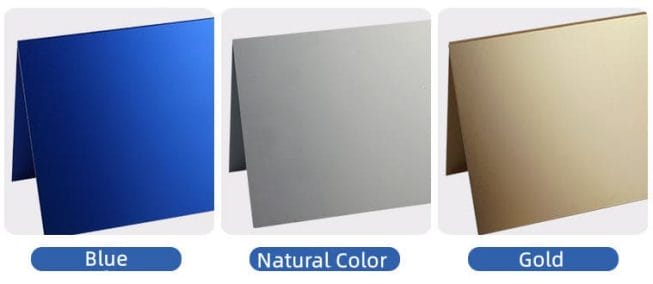
Mechanical Properties
Hard anodic coatings have very high breakdown voltages, providing excellent insulation. The film’s insulating capabilities are most significant when the metal composition is uniform throughout.
When compared to other media for electrical insulation, the anodized coating has the benefit of being able to function at temperatures up to 500 degrees Celsius.
Hard anodized aluminum is the best insulating material since it has high dielectric strength and low heat conductivity.
Resistance to Wear and Hardness
As with hard chromium and high-speed steel, hard anodized aluminum performs best under light loads when its wear characteristics are at their best.
It’s important to note that the coating’s microhardness varies widely depending on the alloy used.
Castings (also) of wrought alloys with the same chemical composition but made using several casting techniques.
Surface Treatment
Surface finish significantly impacts the coating’s wear resistance. Abrasion is caused when tiny coating particles break away under intense local pressure and become trapped or influence the sliding surface. That is especially true for characters with a rougher finish.
Because the hard anodizing process makes the surface more uneven, the component’s surface finish should be higher than the required final finish to accommodate this change.

Recommended: What Types of Surface Finishes are Used In CNC Machining?
Resistance to Heat
Anodizing creates a thin layer of aluminum oxide, which acts as a good insulator and facilitates good heat conduction.
On the other hand, hard anodized aluminum can endure temperatures up to about 2000 degrees Celsius for short periods. As such, it’s a useful example. Usage in the air intakes of rockets.
The heat conductivity of a common anodic coating is 10%-30% lower than aluminum. The emissivity of aluminum increases from 20 percent to 80 percent after being coated with an anodic layer only 10 micrometers thick.
Since a thick hard anodic coating is essentially the same as a “black body” in heat dissipation, there is little point in dyeing it black as is frequently done.
Adhesion
The hard anodic layer adheres better than aluminum coatings.
Color
The component type and amount of coating on a hard-anodized aluminum item affect its color. As a result, the natural color of some types of hard anodize is dark gray or bronze gray. In addition to this, the dyed variant is completely black.

Corrosion Resistance
Anodizing a material thickly increases its corrosion resistance. In addition, the thickness of the hard anodize layer varies depending on the type of aluminum.
As a direct consequence, the oxidation-resistant properties of the hard anodic coating improve with its growing thickness.
Types of Aluminum Anodizing
There are 3 three unique types of aluminum anodizing.
Anodizing with Chromic Acid (Type I)
Chromic acid creates a Type 1 anodizing aluminum oxide coating. Chromic acid may form a 20-100 micro-inch aluminum oxide coating with outstanding corrosion resistance via sealing.
This dielectric and non-conductive material is suitable for priming before painting or gluing. Type I anodizing can be utilized in components with high dimensional accuracy because it doesn’t change part dimensions.
Type 1 anodized aluminum components are good for stress and bending conditions. Aircraft and spacecraft make extensive use of these components.
Even after being colored black, those pieces still look a little bluish. Because of its thinness, the film can only absorb so much color.
Using harmful and carcinogenic chromic acid harms the environment. The wastewater treatment plant must handle Type 1 anodizing facilities’ chromic acid wastes.
Anodizing with Sulfuric Acid (Type II)
The most popular anodizing method, Type II, uses sulfuric rather than chromic acid. When used as an electrolyte, sulfuric acid effectively creates porous structures.
Hence, Type II anodized components readily take on additional finishes like paints, stains, and adhesives.
They can also be dyed decoratively. The oxide film produced by a Type II anodizing process is typically thicker, with dimensions between 100 and 1000 microinches.
Also, this coating is dielectric and non-conductive. The components with type II anodization are harder and more resistant to abrasion and corrosion than their Type I counterparts.
Optical components, military cookware, weapons, aesthetic uses, construction, and consumer electronics all use these pieces.
Type II anodizing is more cost-effective than Type I due to lower chemical, energy, and waste treatment costs.
Hard Anodizing ( Type III )
The electrolyte solution in Type III anodizing is sulfuric acid. The current density, voltage, and temperature of this type of anodizing are all higher than those of Type II anodizing.
The oxide film created by Type III anodizing is substantially more substantial, measuring in at over a thousand microinches in thickness and featuring a highly porous structure.
The hardest materials coat them. This procedure can alter parts’ dimensions.
Hence it may not be suitable for components that need precise measurements. Type II produces dark, uncolored film.
Parts with a Type III anodization, often known as a hard coat, have excellent abrasion resistance, wear resistance, and electrical insulation.
As a bonus, PTFE impregnation can reduce the coefficient of friction, which is useful for moving parts that encounter conflict regularly.
In addition, they are resistant to corrosion. But as the oxide film grows thicker beneath the surface of the aluminum part, the part’s fatigue resistance drops. There is a substantial need for Type III anodized components in the defense, aviation, and aerospace sectors.
They have many applications in the manufacturing industry, including sliding parts, linear guides, pistons, valves, hinges, gears, insulating plates, compressor fittings, and automobile components.
Type III anodizing, like Type II, is safe and environmentally beneficial but comes at a higher price due to the conditions needed throughout the process.
Thickness of Anodizing
The thickness of the solid anodizing coating must be between 25 and 150um. However, most are between 50 and 80um.
Thinner than 25 m, hard anodized aluminum components find use in tooth keys, spirals, and other contexts.
Anodizing parts to a thickness of around 50um is standard for wear resistance or insulation. Process parameters must generate a hard anodizing coating thicker than 125um.
The film’s surface roughness rises with anodized coating thickness.
How Thick is Hard Anodized?
By creating an aluminum oxide coating on the surface of machined aluminum parts and components, hard anodizing increases the hardness of the aluminum alloy and improves its resistance to wear, abrasion, and corrosion.
Aluminum oxide is as hard as case-hardened steel when it converts to hard anodized to the proper thickness (up to Rockwell 70C).
Hard Anodized vs. Anodized: Everything You Need to Know
First, there are objective qualities, such as the material’s density and aesthetic quality. It is the thickness that distinguishes anodized from hard anodized.
The surface of a hard-anodized aluminum component is thicker than that of normal anodized, making it more resistant to abrasion. In addition, its surface is more consistent than standard anodized aluminum.
1. Production Condition
The state of production. Hard anodizing coatings are created at lower temperatures and higher current density when the thickness is more significant than 25 microns.
2. Electrolytes
Hard anodizing often employs sulfuric acid solution and sulfuric acid combined with an organic acid, such as oxalic acid, amino sulfonic acid, etc. Nevertheless, chronic or sulfuric acid electrolytes allow standard anodizing.
3. Sealing
The process of preventing or fixing leaks. Regularly anodized aluminum still has pores after the anodization process. Before use, aluminum oxide must fill those pores.
Aluminum with an oxide coating, like that found in anodizing, is not long-lasting. Because of how thick it is, this layer will quickly break down under regular use.
4. The Use Case
Hydraulics, pistons, some kitchen utensils, pans, and building exteriors are just a few of the many uses for hard-anodized aluminum items due to their durable, wear-resistant surface.
You’ll often find it hard anodizing on business or industrial products instead of consumer goods. However, Chronic or sulfuric acid electrolytes allow hard anodizing.
Usage of Aluminum Hardcoat Anodizing
Hard coat anodize is frequently utilized by product designers because of its improved hardness and its other enhanced surface features.
These properties include increased resistance to impact and wear. They consist of hydraulics, culinary dishes, pistons, and other construction materials, among other things.
Building and automotive industries employ anodized aluminum. The aluminum anodizing industry has produced these standards and recommendations to assist specifiers in making appropriate finish choices for their projects.
Every anodizing job requires a detailed description of the desired color and finish to prevent disagreements over how the colors should look.
The appearance of an anodized surface depends on more than just the color saturation of the coating.
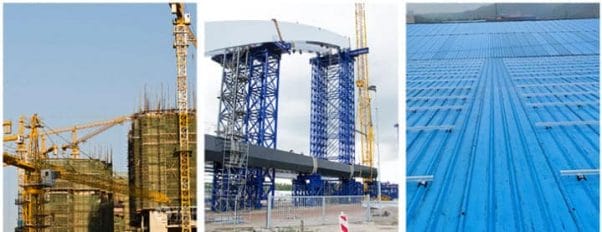
Aluminum is used in the following products, either entirely or partially:
- Fronts, curtain walls, and roofs are all examples of building envelopes.
- Home electronics and appliances include dishwashers, washing machines, ovens, microwaves, and coffee makers.
- Building accessories include air vents, duct covers, awnings, storm doors, window frames, mailboxes, accessories for the bathroom, patio coverings, and wall switch plates.
- Equipment for use in restaurants, including refrigerators, freezers, and stoves.
- Home and office furnishings include desks, chairs, mattresses, and filing cabinets.
- Leisure goods include golf carts, boats, and camping and fishing gear.
- Products such as fire extinguishers, cameras, solar panels, phones, picture frames, and bathrooms have used the material.
- The finishing touches on the interior.
Given the wide diversity of aluminum components used in anodizing projects.
Summary
Anodized aluminum is stronger, corrosion-resistant, and attractive. When aluminum is anodized, the oxide film that forms on the surface of the part bonds strongly and remains stable over time.
This film can withstand being chipped, scratched, peeled, and flaked without showing any signs of damage Anodizing prepares aluminum for coating (such as finishes, coatings, lubricants, and adhesives).
Anodizing can be batch or continuous. Pre-treatment, electrolysis, coloring, and sealing are involved.
- Pre-treatment involves cleaning and removing superficial defects. The electrolysis process can result in either a solid or porous sheet, depending on the nature of the electrolyte used. The porous film is more prevalent.
- The most common methods are chromic acid anodizing, sulfuric acid anodizing, and hard anodizing. The other forms are clear anodizing, thin-film sulfuric acid anodizing, phosphoric acid anodizing, and boric-sulfuric acid anodizing.
- Electrolytic, interference, and dip coloring follow anodic therapy. Undyed anodized parts don’t need color. Sealing the oxide film prevents oxygen leakage.

 info@yijinsolution.com
info@yijinsolution.com (+86) 188-2253-7569
(+86) 188-2253-7569
